Just imagine…
A pleasant, chilly, early morning on the outskirts of Belgrade. Sun rays are peeping out behind the low residential buildings across the road, and breaking through the clouds dust that rises from the ground, just to rest on the face of the young lieutenant of the Royal Guard. He takes out his fire steel and the flint, lits his rolled cigarette and prepares for the muster. The neighing and snorting, the clip-clopping of horses and the banter of youngsters wearing their perfectly ironed uniforms echo between the low barracks and stables. The horse-car tumult and the giggling of the young dames mix in the air as they all start their morning spaziergang. The young officer is about to spend another day on the dusty training grounds of The Serbian Royal Army and he is not too happy about it. But hey! C est la vie. He is walking down the line towards the barracks of the Seventh Cavalry Regiment to see his superior and report on the progress of the training of the recruits. On the other side of the Manege, his recruits, the students of the military academy are getting ready for their exercise. An array of stables, bedrooms and supporting facilities of the camp shines in the bright morning sun. The sparrows are having a jolly row over a piece of bread in the dust, the fragrance of blossoming poplars and the summer is spreading in the air, while the uniformed gentleman and elegantly dressed government officials of the nearby institutions arrive to work.
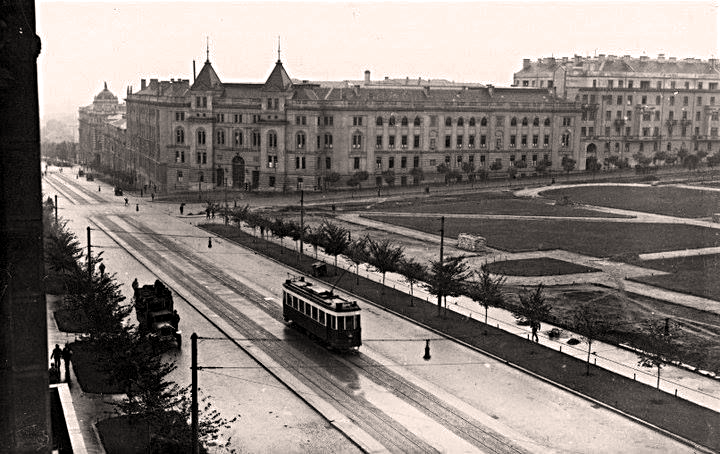
No, this not a scenario for the third sequel of that horrendous movie about the national football team, but a very likely scene from Manjezh’s previous life. Similar scenes were very common back in the days when this area was a training ground for cavalrymen, as well as the artillery corps of the Serbian, and later Yugoslavian Army. The former bequeathed us with the well known name among the locals and the Yugoslav Drama Theater. If the previous sentence left you bedazzled, give us a few more lines and we will clear the mess up.
Manège comes from French and it was a common loanword in most European states in the 18th Century as a common denominator for a Riding School. Two centuries ago, it denominated before all else, an institution where Calvary military units were trained.
Luckily for those fond of history and unfortunately for the many who aren’t, it would be unthinkable to start a story of Manjez park without resorting to history. Our libertarian past has pretty much shaped Manjež as we know it today. After the hatt-i-sharif in 1830, when Serbia became an autonomous vassal province of the Ottoman Empire, Belgrade was urbanizing quickly and spread behind the borders of Stambol gate (today’s Republic Square). The rulers of the times were intent on making representative buildings that would, in a way reflect the aspirations of the young province to grow into a modern European country. The new administrative and military core of the entire country was designated right there – at the crossroads of streets known as King Milosh’s, Nemanjina and King Milans. in other words, around Manjež Park.
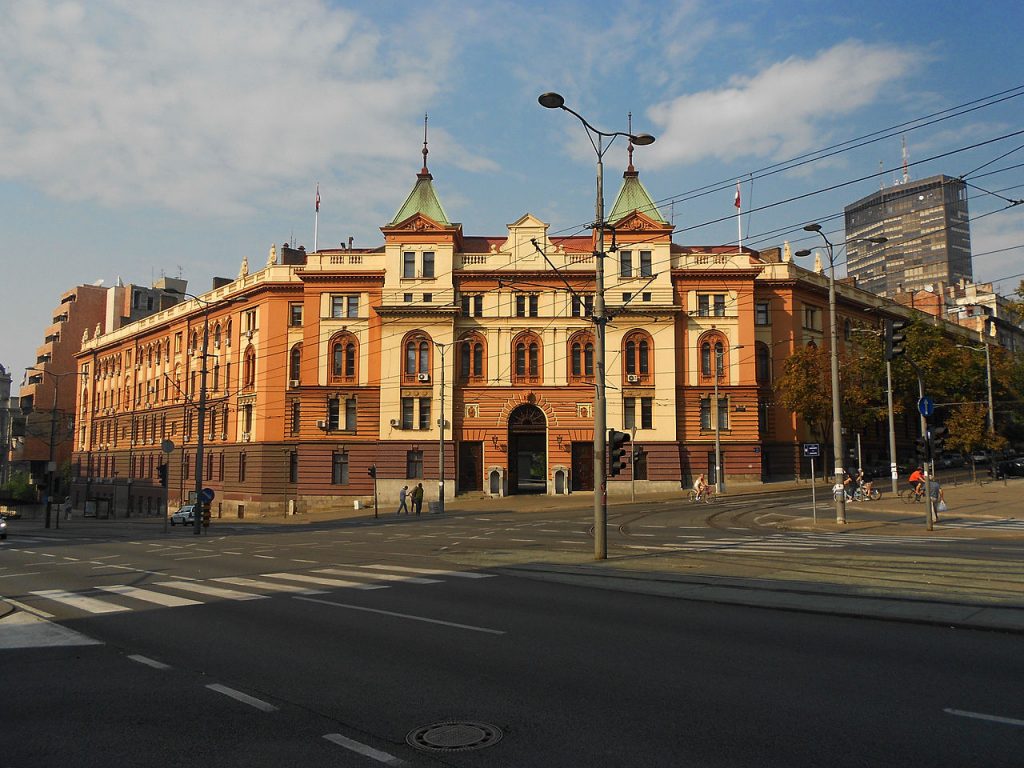
Most of the buildings in this area were erected in the second half of the 19th century. Some of them were slightly smaller and slightly less grandiose at the time, but many have remained as they were to this day. The grand Barracks of the Seventh Regiment is that beautiful edifice with fairy-tale towers at the corner of Nemanjina and Resavska streets. It was built in 1901 and it still belongs to the military. On the spot of the devastated Yugoslav Army HQ, there was the Ministry of The Army, and the Ascension Church, at the corner of King Miloš and Queen Natalia’s streets has been mostly used as an “army church”. What used to be the Military Academy on the other corner of Resavska and Nemanjina, still stands there. Unfortunately, however, it is a neglected building with no evident purpose which is about to become become a part of Belgrade Museum.
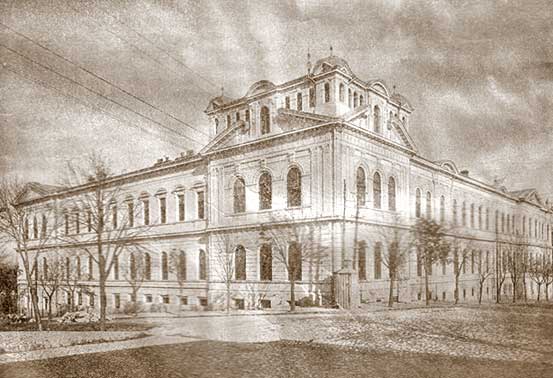
The Officers assembly dating back to 1908, at the corner of Masarikova and Resavska street has been a Department store from the start, mostly serving to supply the soldiers. Even during Socialism in Yugoslavia an similar purpose – it was a popular outlet of clothes and parachutes manufacturer “Kluz”. Today, it only partly serves that purpose – as there is a Chinese Department Store on its top floors. Sometimes its abandoned halls turn into exhibition space, but the impression remains that the city has no idea what to do with it..
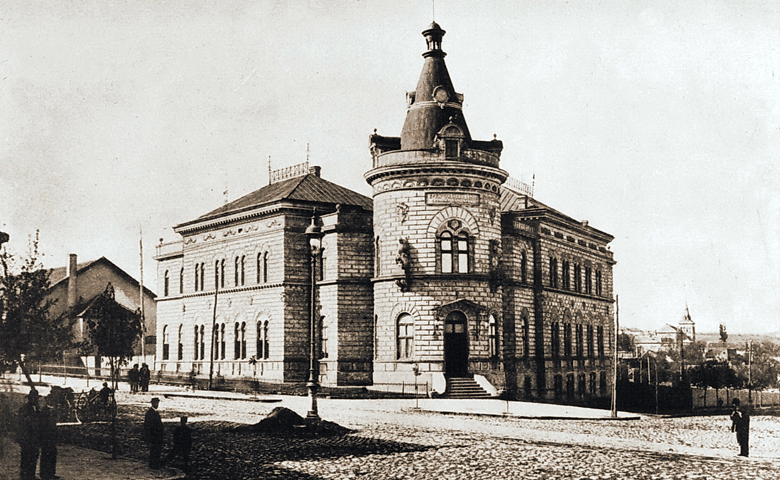
The famous Student’s Cultural Center, which leans onto Manjež with its backyard , was built back in 1895, as an Officer’s Home. After the second world war this was the headquarter of the infamous UDBA (Yugoslav Seceret Police). It is somewhat ironical that after a few decades and great Student’s Protests in 1968, the Communist authorities give away the building to the most reactionary elements and potential threat to state security –The Academic Youth. Since then, the SKC has been a gathering spot of the artists and intellectual avant-guarde, which shaped the new cultural identity of the state. Exhibitions, art workshops, music schools, promotions, concerts and other types of manifestations have been in the building ever since and the regime bullies had to move away from the sight of the decent folks.

SKC has thus become the place with a cult following, and one of the key instigators of the new spirit of Belgrade, for which it was known om the last quarter of the twentieth century. Listing the great names of rock’n’roll music and its derivatives that have played there would take too many pages. But let us say there were many, including the many smaller and less known bands as well as the domestic ones that have filled the halls of SKC for a long time. Many of us, who have grown together with Belgrade in the last half a century, still remember with a glimpse of nostalgia the summer concerts in the “garden of SKC”. The atmosphere would transfer to those who stood behind the walls in Manjež Park and listened to the sounds. The Student’s Cultural centre and Manjež have been for many a single and indivisible body.
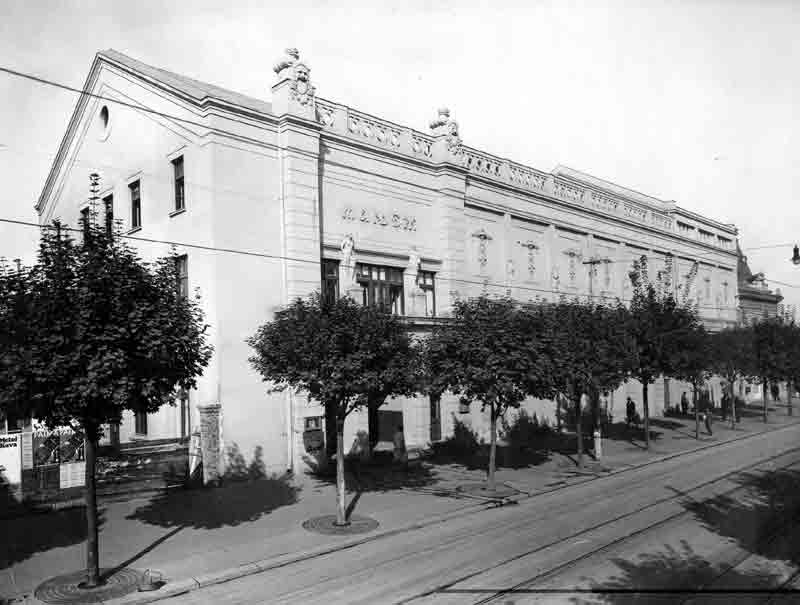
The main object of the old Manyezh, which was a central part of the training complex was erected in 1867, on the upper part of the slope which was intended for barracks, close to King Milan’s street. It was a simple single-storey building, mainly built out of wood materials on the spot where the old Powder Mill stood. Shortly after the First World War it was quickly renovated and turned into a modest theater, with a modest name. In Belgrade, which was still healing its war injuries and grew out of it into a greater city, the needs for culture have grown accordingly. As the National theater was closed at the time (it was damaged during the War), during its reconstruction and expansion the city’s elite needed a replacement pronto. And so 1920, the Manjež theater scene was opened and paved the way to a long tradition that spans to present day.The theater was renovated and expanded several times, due to a series of unfortunate events. Namely it was on fire several times in the century of its existence. Its looks were also changed frequently as a result of changing social circumstances.
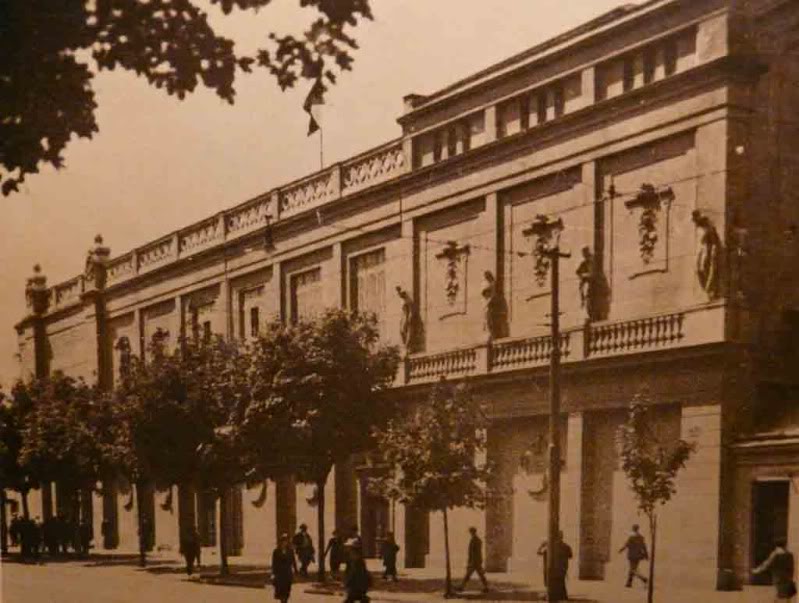
The elegant neoclassical façade of the theater, which we partly get to see today has been the result of its renovation after the first great fire in 1927. Previous building was completely demolished. A great Russian architect who lived in Belgrade at the time, Nikolay Krasnov, had intervened and added another floor, while at the same time adapting the interior to fit a modern theater institution. The new building was so fine, that the Government of the Kingdom of Yugoslavia, decided to move in the National Assembly in it. Luckily, it was just for a few years.
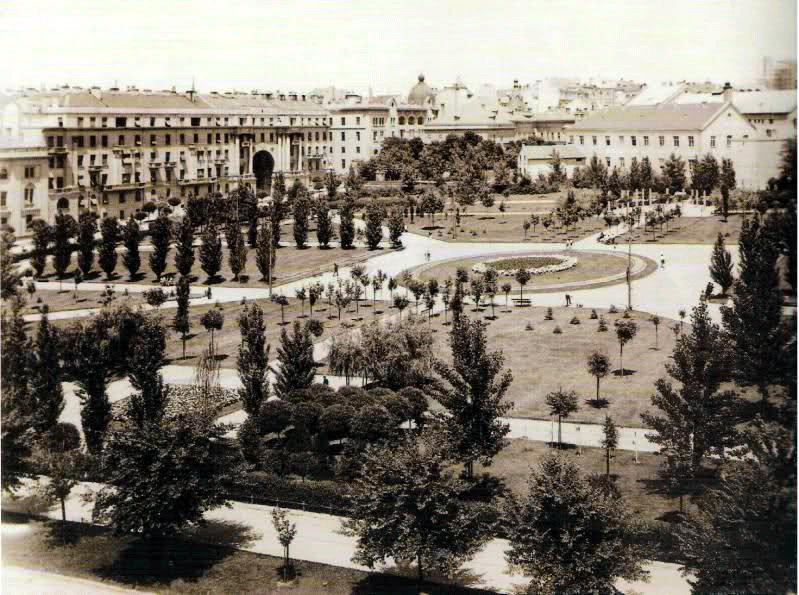
It was then that the space behind the theater was cleaned and the barracks were permanently moved from these grounds. In accordance with the blueprints of Alexandar Krstich the space was deliberately planted with greenery. It was given a simple and handy name: The Park of his royal Highness the Heir to the Throne Peter. According to the General Plan from 1923, it was supposed to be the park of the Opera, Conservatory and the Academy of Theater Arts. The plan was obviously abandoned, but there wasn’t much deviation altogether.
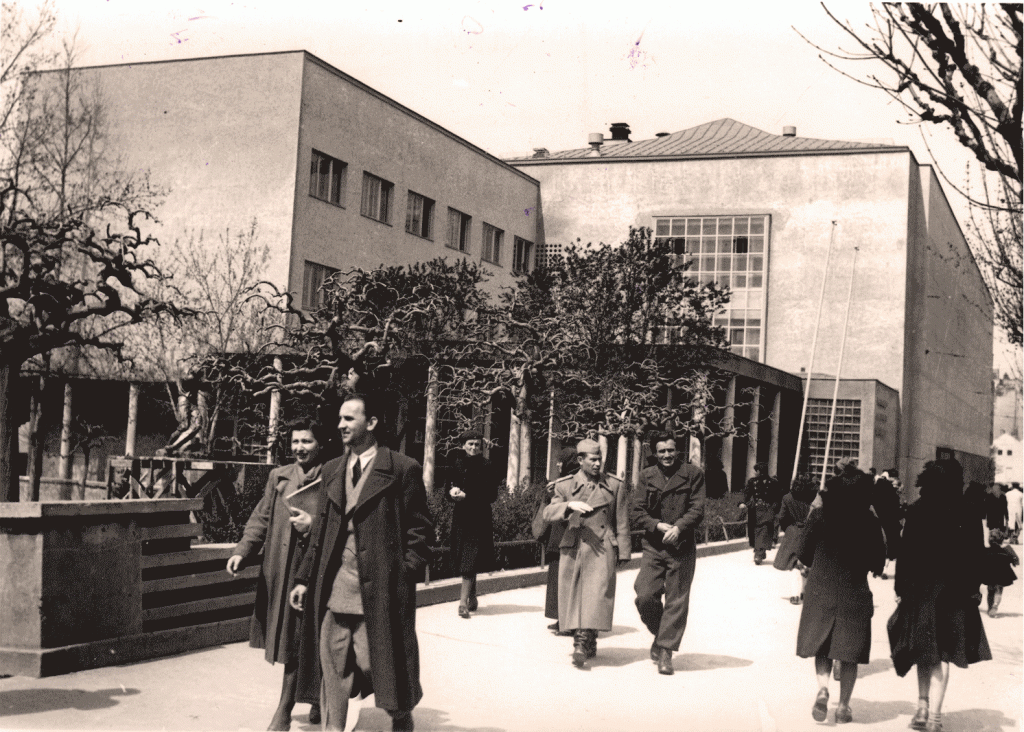
In the meantime, right after the Second World War, the small Serbian Theater Manjež, had grown into the Yugoslav Drama Theater. The head of this institution was then held by the legendary director Bojan Stupica and the authorities decided to hide away the “class inappropriate” outward appearance of the building and built a faceless gray wall in front, which was deemed more aesthetically appropriate for the socialism. However, the surroundings and the functionality of the theater have been in accordance with all of the norms of modern architecture. The theater fountain and the alleyway of trees added up a romantic element to the park and become its integral part. It would be tough to imagine the entrance from Svetozar Marković Street or King Milan’s street without these details. They encircle the space, connect the park and the theater into a recognizable whole, and the lanes lead the visitors into a true artists garden.
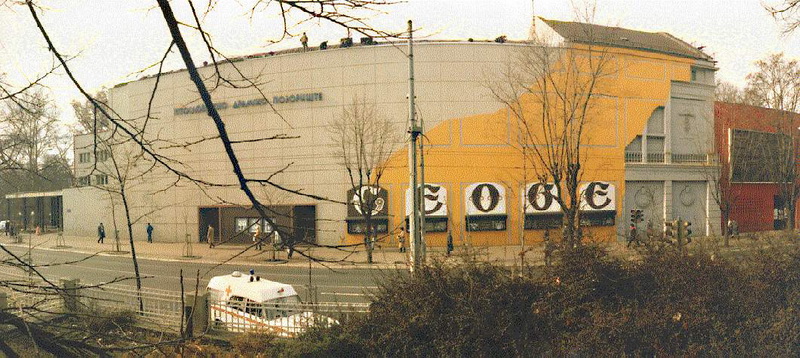
Theater Building has changed its outward appearance once again in 1985., when the shabby walls needed a reinforcement, And when, for the first time since the war, the immured part of the building was revealed again. In the late 1990s the theater building has thoroughly burnt once again, and after the ample reconstruction, the building was finally arranged into a modern urban object as we know it.
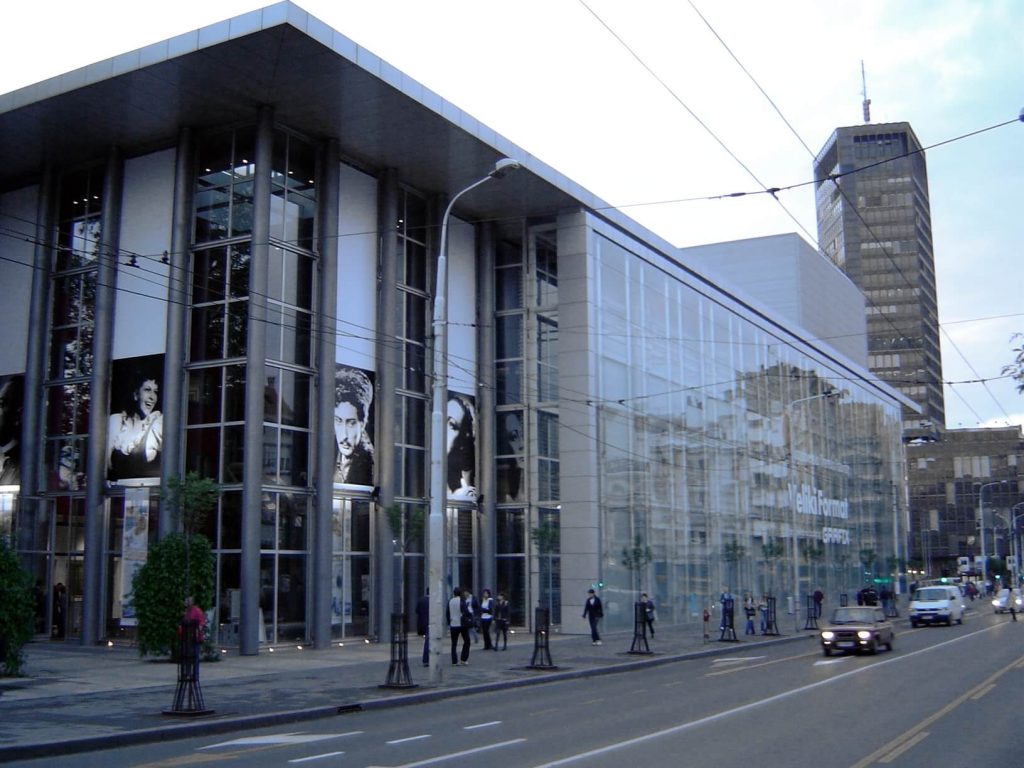
At the backside, nested between SKC and the theater is another old and inevitable neighbour of Manjež.- The faculty of Musical Arts. It was opened in 1937.and for a year the National Assembly has been its tenant also. It was founded under the name Academy of Music, and the famous composers Kosta Manojlović and Stevan Hristić were its headmasters.
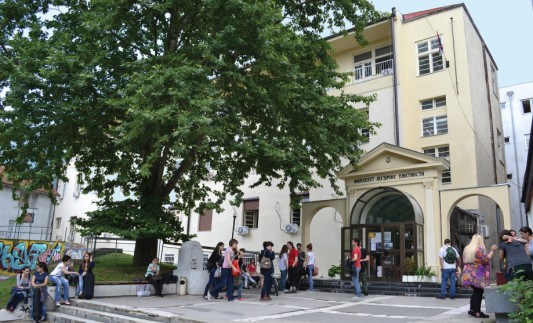
Many generations of students who studied there, had got to know the park before their uni, and then came back to it again while they were studying. The musicians from the Academy have been an integral part of the history of Manjež to the same extent that the park became an integral part of their lives. In a way, Manjež park is the garden of the Faculty.Apart from the students and professors who worked, celebrated ad and enjoyed life there, the park is also a memorial to the great composers: Josif Marinković, Franz Liszt and Frederick Chopin.
The neighbourhood of Manjež became one of the most prestigious cultural hot-spots of the capital, where many Yugoslav, Serbian, and Belgrade artists of all-sorts have been working and creating.
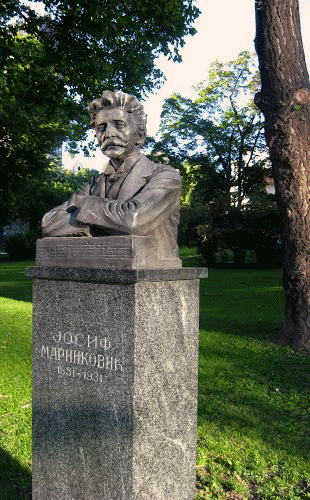
We should also mention the remaining busts, because the people whom they represent deserve it – although it is not quite clear why they stand in this park. Along the trails of Manjež one can notice the three young socialists who lived in the XIX and XX century respectively: those are Kosta Abrašević, Radovan Dragović and Dušan Popović.
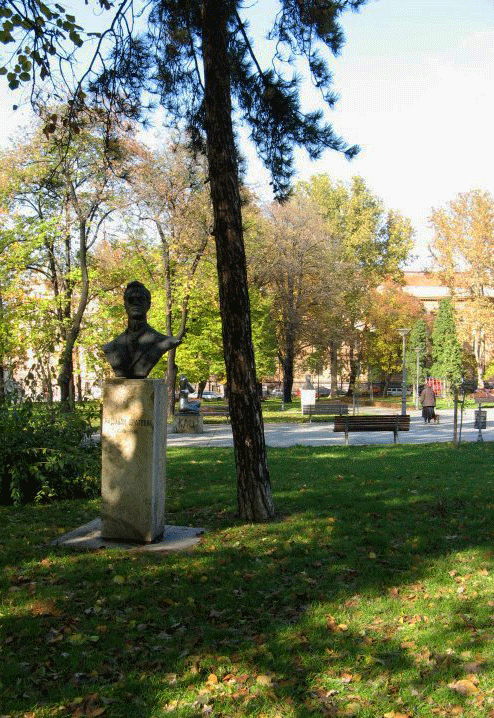
They were the first to start the mutiny against the oppression of the peasants, workers and the enormous social injustice at the times in Serbia – which was, in all honesty, very much a feudal society. Although they died young and dedicated their lives to the people of Serbia, there aren’t many who know of them today. The most famous is by all accounts the poet, Kosta Abrašević whose name is celebrated by many cultural associations today. He actually might be that symbolical link between the art and politics, the components that surround the park from all sides (Nemanjina street is the Administrative core of teh whole country) . The other two were political activists, journalists and active members of the Social Democratic Party and close associates of the uber hipster Dimitrije Tucović.
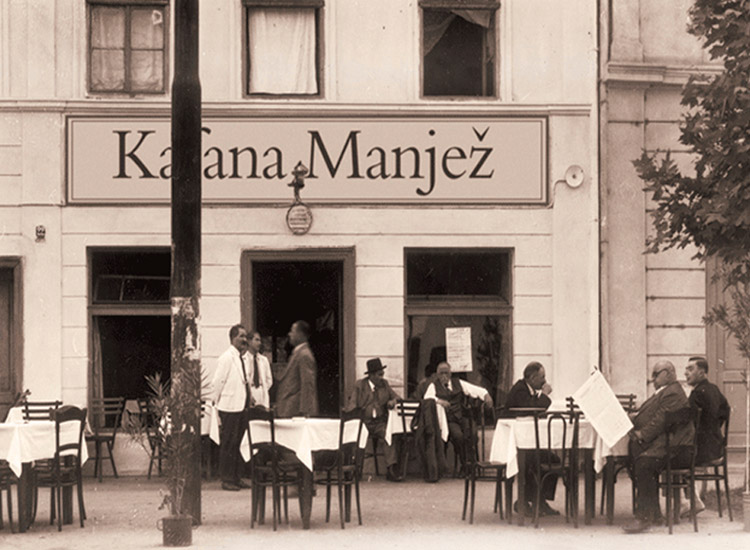
However, for the many of the city bohemians, the aforementioned artists and the lovers of spoons, forks, glasses and admittedly flasks, the true identity of Manjež was created by its namesake from across the road – which happens to be another famous kafana. Because of the proximity of important institutions in its neighbourhood, and its position in the city center, Manjež has long been a one of the most important spots of Belgrade’s nightlife. Many of the city’s inhabitants actually believe that the park was named after the bar. The website of the kafana states it started working in 1936. During its heyday it had a loyal following as one of the city’s most prominent bars. It was frequented mostly by the dissolute artists and the starchy government officials.
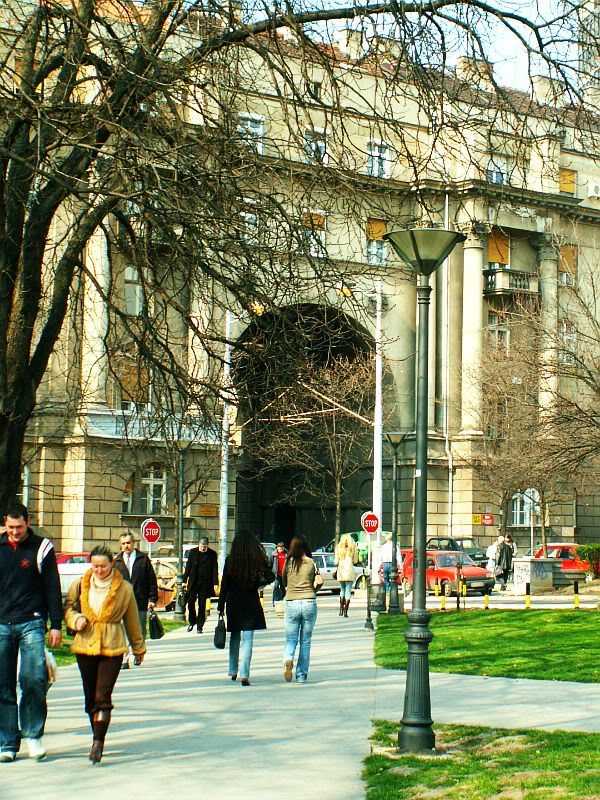
A few words about the park itself. Although it has not been the focus of important happenings many times, Manjež has caught the public attention big time, every time when it did.
In the spring of 2011, Belgrade parks in general have become a center of protest against “prohibition”. The City Assembly, in an attempt to increase the safety of the citizens, has prohibited the sales of alcohol after 22:00. On the other hand the prohibition did not apply to cafes.. The freethinking youths used to resorting to beer bought in supermarkets as one of the limited ways to have fun (and without the monetary means of obtaining the same thing in cafes), rebelled against it. Some off the poorer, and yet educated cohabitants of Belgrade have spent most of their youths on its benches, with a bottle or a can of beer in their hands – while the suspicious looking characters spent wagon-loads of money on turbo folks stars and whiskey – so their discontent was quiet justified. The authorities have put the ban to use, and the protests have died out.
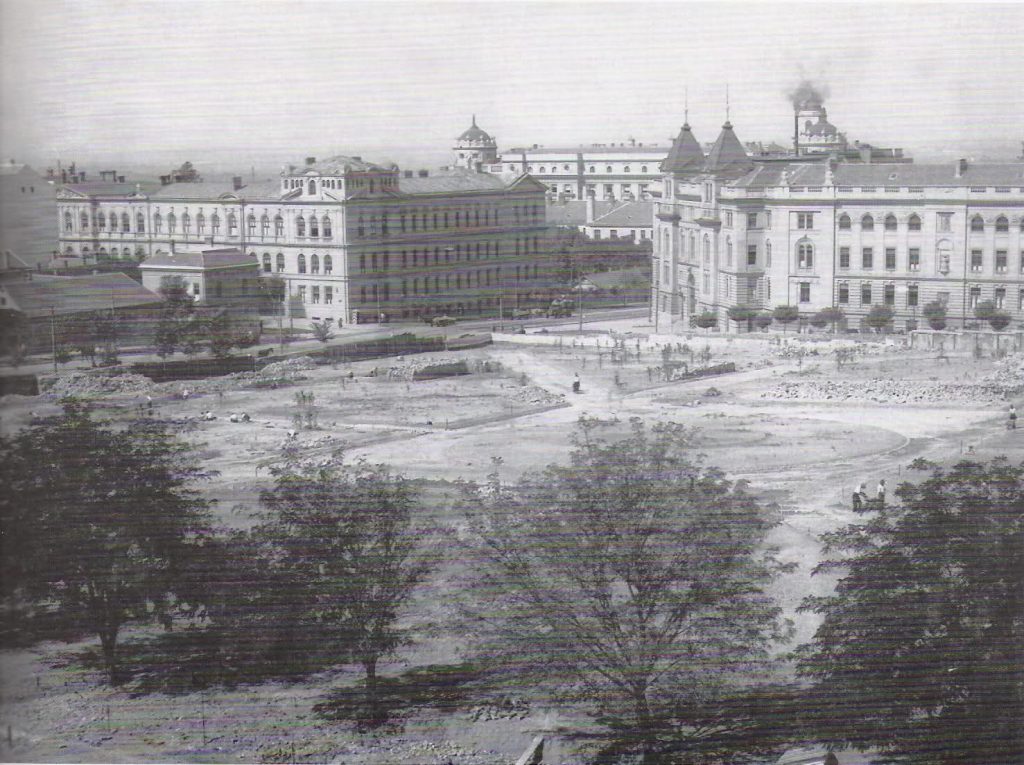
After a few years, but with much less pomp, the ban was lifted. It turned out that the consumptin of alcohol after 22:00 hours did keep the economy of the city waz too well, to be dismissed so easily.
There ‘s been a couple other protests that Manjež witnessed and in its more recent history it has been a symbolic gathering spot for the gay pride parade. The track record of this manifestation in Belgrade has not been the most impressive one, but there has been some progress. It has evolved from brutal beatings of the protesters, to a proof that a couple hundred people can walk for 2 kilometers through the city center while being escorted by 5,000 heavily armored police officers. Not exactly what it’s supposed to be, but hey, we’re not here to judge or write political pamphlets. In 21st century, all those being discriminated against should have a right to raise their voice.
To continue on the same flowery note, Manyezh has also become one of the spots of annual Flower Festivals. Mostly in spring, on several different locations in Belgrade, “plant-o-mans” gather and present Belgraders with the fruits of their work and synergy with nature. Under the wing of several organisations and under different names, Manjež gets an additional infuse of blooming. That’s the time when you get to walk between the more exotic specimens of flora amidst the overall grayness of Belgrade, and get to see the fine little wonders of horticulture, quite unusual for this part of the planet. Until you see it with your own eyes it is quite hard to believe the sorts of things that grow out the ground and if you are as crazed about plants as the author of this text is, you might want to stop and smell the roses , or just speak to the botanists. The diligent hands that were kind enough to nurture these beautiful creatures are also kind enough to share a bit of that beuaty with you in the midst of the urban chaos.
One particular peace of greenery,however, deserves a special mention.
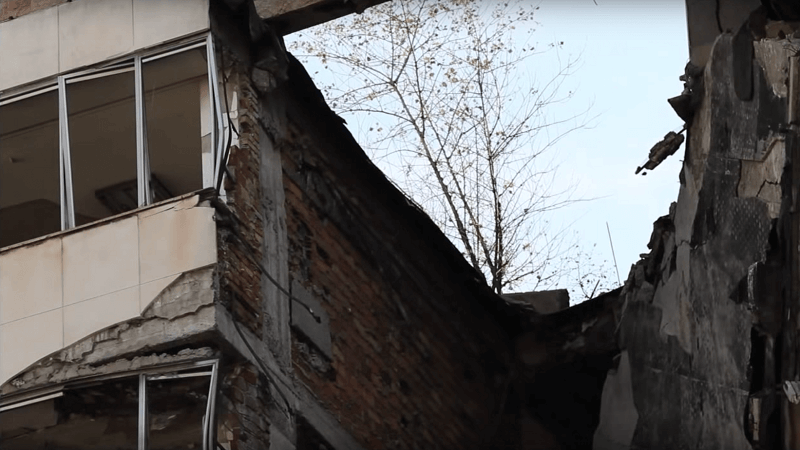
During the 1999 war with NATO, the nearby colossal Bergsonian HQ of the Yugoslav People’s Army, became a target of an architectural critique (as Mr Jovanović Weiss coined it in his inspiring account to this edifice) in the form of a cruise missile (that night is a vivid memory for the translator of this text). Its gaping ruin stood as a grim reminder of those sad and tough times for the people of Serbia fir almost two decades, when the officials decided that it was time to clear the place up. After 13 years a proper little forest started growing out of the concrete and inspired a short environmentally aware documentary (which can be seen here). The story did not end there though. Boško Savković, the director of the original documentary developed the idea a bit further and made a longer version. At the time of writing of this text it still hasn’t been shown to public, but what we know for certain is that the closing sequences include a bunch of youths who were born in 1999 who are taking this tree from the ruins of the HQ and planting it in Manjež Park.
Hope it will look as good as it sounds.
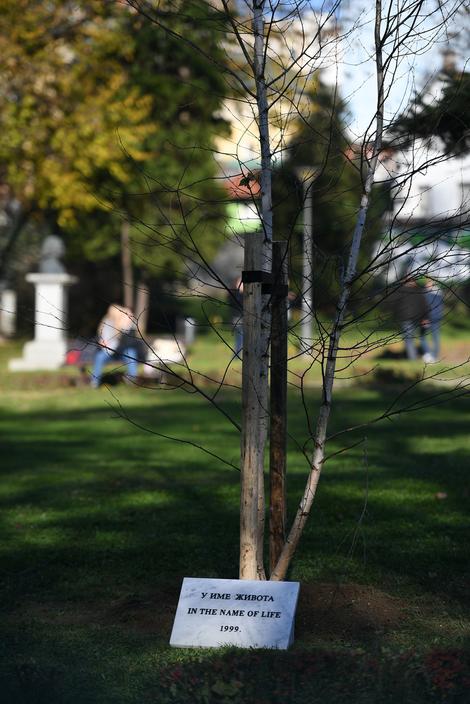
And so, while we are surrounded by the vibrantly colored plants and the setting sun, let’s go back to our officer from the begging of the story. I often wonder, while am watching my great grandmothers photos that have turned yellow, what would those guys that have attended military schools back then do today. What would they decide to be, which trend would they succumb to?
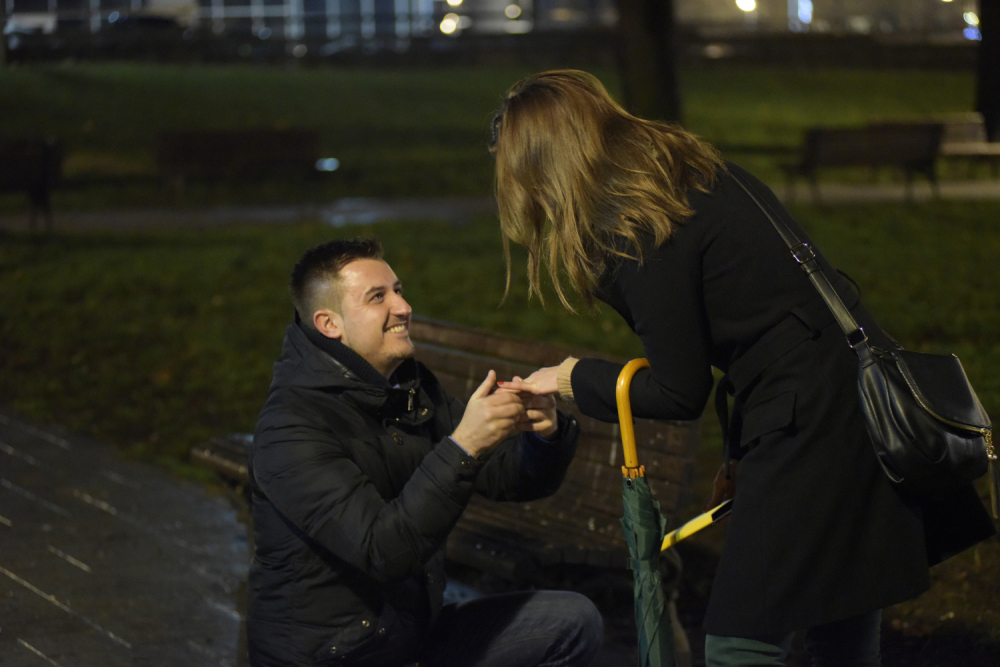
What would the young lieutenant say upon realization that his Calvary Manjež is long gone, and that trams now go on their own, that soldiers have been replaced by actors and that his descendants are troubled by the same angst.
I like to think that he’d take off his shoulder straps, unbutton his tightly knit dolama and smile to the good people of Manjež.
I bet he’d sit on the bench, light up that cigarette and sip a beer with no clear thoughts and a deep knowing sigh.
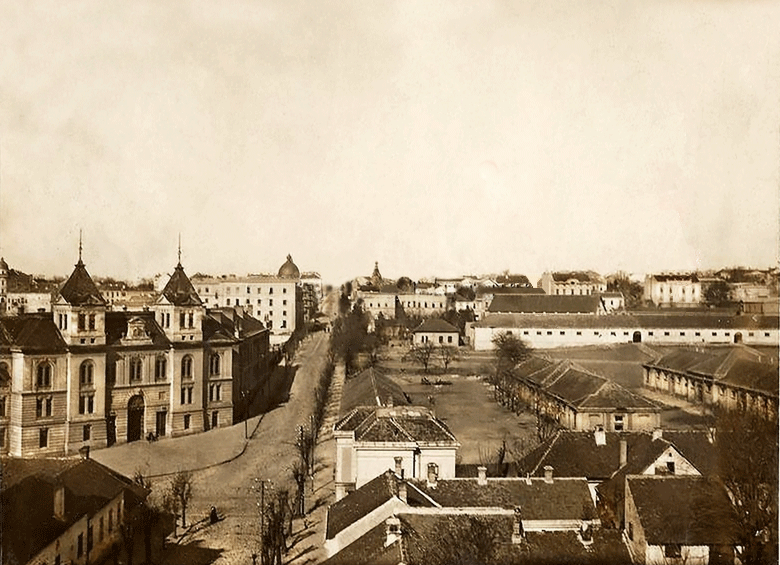
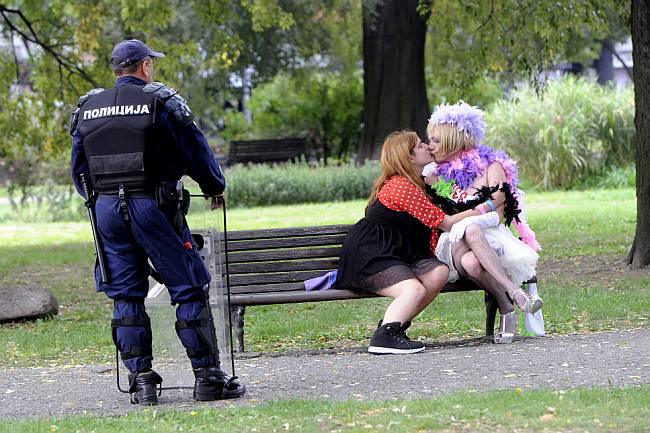
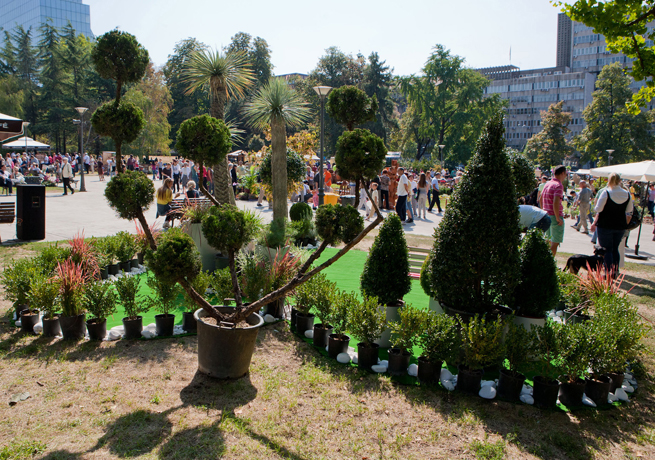
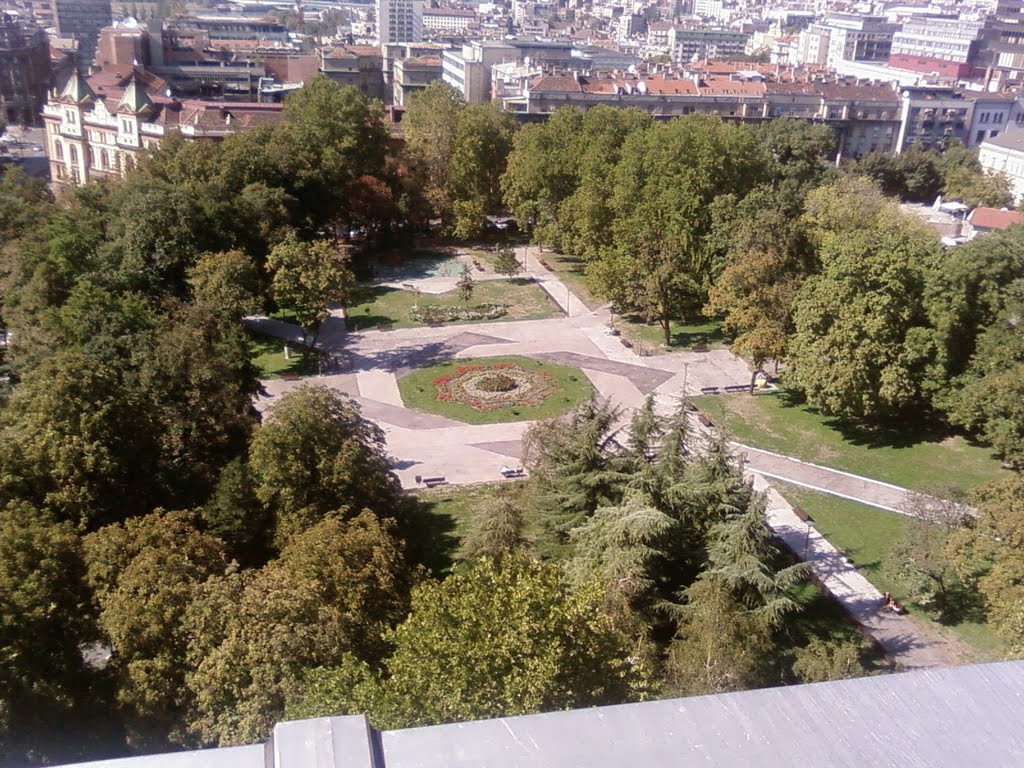
Be First to Comment